Impact Damage Ascertainment in Composite Plates Using In-Situ Acoustic Emission Signal Signature Identification
Abstract
1. Introduction
1.1. Background and Motivation
1.2. Objectives of This Paper
2. Manufacturing Process and Experimental Setup
2.1. Manufacturing of CFRP Composite Laminates
2.2. Experimental Setup for Acoustic Emission Recording of Impacted Composite Coupon
3. AE Signal Analysis from Instrumented Impact Tests
3.1. 1 J Impact Test on AE Instrumented 2 mm Composite Coupon–No Damage
3.2. 16 J Impact Test on AE Instrumented 2 mm Composite Coupon–1” Impact Damage
3.3. Mode Separation Study of AE Signals Due to Impact Event
4. Summary, Conclusions and Future Work
4.1. Summary
4.2. Conclusions
4.3. Future Work
Author Contributions
Funding
Acknowledgments
Conflicts of Interest
References
- Davis, M.J.; Jones, R.T. Damage Tolerance of Fibre Composite Laminates. In Fracture Mechanics Technology Applied to Material Evaluation and Structure Design; Springer: Dordrecht, The Netherlands, 1983; pp. 635–655. [Google Scholar]
- Anderson, B. Factors affecting the design of military aircraft structures in carbon fibre reinforced composites. In Fracture 84; Pergamon: New Delhi, India, 1984; pp. 607–622. [Google Scholar]
- MIL-HDBK-17-3F. Composite Materials Handbook; Chapter 7; US Department of Defense: Arlington, VA, USA, 2002; Volume 3, pp. 7–29.
- James, R.; Giurgiutiu, V.; Flores, M.; Mei, H.; Haider, M.F. Challenges of generating controlled one-inch impact damage in thick CFRP composites. In Proceedings of the AIAA Scitech 2020 Forum, Orlando, FL, USA, 6–10 January 2020; p. 0723. [Google Scholar]
- James, R.; Giurgiutiu, V. Towards the generation of controlled one-inch impact damage in thick CFRP composites for SHM and NDE validation. Compos. Part B Eng. 2020, 203, 108463. [Google Scholar] [CrossRef]
- Cantwell, W.; Morton, J. Detection of impact damage in CFRP laminates. Compos. Struct. 1985, 3, 241–257. [Google Scholar] [CrossRef]
- Bar-Cohen, Y.; Crane, R.L. Washington, DC: U.S. Patent and Trademark Office. U.S. Patent No. 4,457,174, 3 July 1984. [Google Scholar]
- Aymerich, F.; Meili, S. Ultrasonic evaluation of matrix damage in impacted composite laminates. Compos. Part B Eng. 2000, 31, 1–6. [Google Scholar] [CrossRef]
- Gresil, M.; Giurgiutiu, V. Guided wave propagation in composite laminates using piezoelectric wafer active sensors. Aeronaut. J. 2013, 117, 971–995. [Google Scholar] [CrossRef]
- Santos, M.; Santos, J.; Amaro, A.; Neto, M.A. Low velocity impact damage evaluation in fiber glass composite plates using PZT sensors. Compos. Part B Eng. 2013, 55, 269–276. [Google Scholar] [CrossRef]
- Rogge, M.D.; Leckey, C.A. Characterization of impact damage in composite laminates using guided wavefield imaging and local wavenumber domain analysis. Ultrasonics 2013, 53, 1217–1226. [Google Scholar] [CrossRef]
- Tai, S.; Kotobuki, F.; Wang, L.; Mal, A. Modeling Ultrasonic Elastic Waves in Fiber-Metal Laminate Structures in Presence of Sources and Defects. J. Nondestruct. Eval. Diagn. Progn. Eng. Syst. 2020, 3, 1–42. [Google Scholar] [CrossRef]
- James, R.; Haider, M.F.; Giurgiutiu, V.; Lilienthal, D. A simulative and experimental approach towards eddy current non-destructive evaluation of manufacturing flaws and operational damage in CFRP composites. J. Nondestruct. Eval. Diagn. Progn. Eng. Syst. 2019, 3, 1–14. [Google Scholar] [CrossRef]
- Liang, T.; Ren, W.; Tian, G.Y.; Elradi, M.; Gao, Y. Low energy impact damage detection in CFRP using eddy current pulsed thermography. Compos. Struct. 2016, 143, 352–361. [Google Scholar] [CrossRef]
- He, Y.; Tian, G.; Pan, M.; Chen, D. Impact evaluation in carbon fiber reinforced plastic (CFRP) laminates using eddy current pulsed thermography. Compos. Struct. 2014, 109, 1–7. [Google Scholar] [CrossRef]
- Narayanan, R.M.; James, R. Microwave nondestructive testing of galvanic corrosion and impact damage in carbon fiber reinforced polymer composites. Int. J. Microw. Appl. 2018, 7, 1–15. [Google Scholar] [CrossRef]
- Greenawald, E.C.; Levenberry, L.J.; Qaddoumi, N.; McHardy, A.; Zoughi, R.; Poranski, C.F., Jr. Microwave NDE of impact damaged fiberglass and elastomer layered composites. In AIP Conference Proceedings; American Institute of Physics: Melville, NY, USA, 2000; Volume 509, pp. 1263–1268. [Google Scholar]
- Li, Z.; Haigh, A.D.; Soutis, C.; Gibson, A.A.P. Simulation for the impact damage detection in composites by using the near-field microwave waveguide imaging. In NDT 2014—53rd Annual Conference of the British Institute of Non-Destructive Testing; British Institute of Non-Destructive Testing: Northampton, UK, 2014. [Google Scholar]
- Li, Z.; Soutis, C.; Haigh, A.; Sloan, R.; Gibson, A. Application of an electromagnetic sensor for detection of impact damage in aircraft composites. In Proceedings of the 2016 21st International Conference on Microwave, Radar and Wireless Communications, MIKON 2016, Krakow, Poland, 9–11 May 2016. [Google Scholar]
- Meola, C.; Carlomagno, G.M. Impact damage in GFRP: New insights with infrared thermography. Compos. Part A Appl. Sci. Manuf. 2010, 41, 1839–1847. [Google Scholar] [CrossRef]
- Tan, K.; Watanabe, N.; Iwahori, Y. X-ray radiography and micro-computed tomography examination of damage characteristics in stitched composites subjected to impact loading. Compos. Part B Eng. 2011, 42, 874–884. [Google Scholar] [CrossRef]
- Meola, C.; Carlomagno, G.M. Infrared thermography to evaluate impact damage in glass/epoxy with manufacturing defects. Int. J. Impact Eng. 2014, 67, 1–11. [Google Scholar] [CrossRef]
- Bull, D.; Helfen, L.; Sinclair, I.; Spearing, S.; Baumbach, T. A comparison of multi-scale 3D X-ray tomographic inspection techniques for assessing carbon fibre composite impact damage. Compos. Sci. Technol. 2013, 75, 55–61. [Google Scholar] [CrossRef]
- Schilling, P.J.; Karedla, B.R.; Tatiparthi, A.K.; Verges, M.A.; Herrington, P.D. X-ray computed microtomography of internal damage in fiber reinforced polymer matrix composites. Compos. Sci. Technol. 2005, 65, 2071–2078. [Google Scholar] [CrossRef]
- Mei, H.; Haider, M.F.; James, R.; Giurgiutiu, V. Pure S0 and SH0 detections of various damage types in aerospace composites. Compos. Part B Eng. 2020, 189, 107906. [Google Scholar] [CrossRef]
- James, R.; Mei, H.; Giurgiutiu, V. SH-mode guided-wave impact damage detection in thick quasi-isotropic composites. In Proceedings of the Health Monitoring of Structural and Biological Systems IX, Houston, TX, USA, 10–13 February 2020; Volume 11381, p. 113810R. [Google Scholar]
- Mei, H.; James, R.; Giurgiutiu, V. Damage detection in laminated composites using pure SH guided wave excited by angle beam transducer. In Proceedings of the Health Monitoring of Structural and Biological Systems IX, Houston, TX, USA, 10–13 February 2020; Volume 11381, p. 113810P. [Google Scholar]
- Mei, H.; James, R.; Haider, M.F.; Giurgiutiu, V. Multimode Guided Wave Detection for Various Composite Damage Types. Appl. Sci. 2020, 10, 484. [Google Scholar] [CrossRef]
- Prosser, W.H.; Gorman, M.R.; Humes, D.H. Acoustic Emission Signals in Thin Plates Produced by Impact Damage; Journal of Acoustic Emission, Acoustic Emission Working Group: Houston TX, USA, 1999. [Google Scholar]
- De Rosa, I.M.; Santulli, C.; Sarasini, F.; Valente, M. Post-impact damage characterization of hybrid configurations of jute/glass polyester laminates using acoustic emission and IR thermography. Compos. Sci. Technol. 2009, 69, 1142–1150. [Google Scholar] [CrossRef]
- De Rosa, I.M.; Santulli, C.; Sarasini, F. Acoustic emission for monitoring the mechanical behaviour of natural fibre composites: A literature review. Compos. Part A Appl. Sci. Manuf. 2009, 40, 1456–1469. [Google Scholar] [CrossRef]
- Choi, I.; Hong, C. Low-velocity impact response of composite laminates considering higher-order shear deformation and large deflection. Mech. Compos. Mater. Struct. 1994, 1, 157–170. [Google Scholar] [CrossRef]
- Park, J.-M.; Kong, J.-W.; Kim, J.-W.; Yoon, D.-J. Interfacial evaluation of electrodeposited single carbon fiber/epoxy composites by fiber fracture source location using fragmentation test and acoustic emission. Compos. Sci. Technol. 2004, 64, 983–999. [Google Scholar] [CrossRef]
- James, R.; Joseph, R.; Giurgiutiu, V. Impact damage detection in composite plates using acoustic emission signal signature identification (Conference Presentation). In Proceedings of the Active and Passive Smart Structures and Integrated Systems IX, Houston, TX, USA, 10–13 February 2020; Volume 11376, p. 113760K. [Google Scholar]
- ASTM D7136/D7136M-15. Standard Test Method for Measuring the Damage Resistance of a Fiber-Reinforced Polymer Matrix Composite to a Drop-Weight. Impact Event ASTM Int. 2015, 15, 1–7. [Google Scholar]
- Caputo, F.; De Luca, A.; Lamanna, G.; Borrelli, R.; Mercurio, U. Numerical study for the structural analysis of composite laminates subjected to low velocity impact. Compos. Part B Eng. 2014, 67, 296–302. [Google Scholar] [CrossRef]
- Flores, M.; Mollenhauer, D.; Runatunga, V.; Beberniss, T.; Rapking, D.; Pankow, M. High-speed 3D digital image correlation of low-velocity impacts on composite plates. Compos. Part B Eng. 2017, 131, 153–164. [Google Scholar] [CrossRef]
- Wallentine, S.M.; Uchic, M.D. A study on ground truth data for impact damaged polymer matrix composites. In AIP Conference Proceedings; AIP Publishing LLC: Melville, NY, USA, 2018; Volume 1949, p. 120002. [Google Scholar]
- Giurgiutiu, V.; James, R.; Joseph, R. Acoustic emission method to ascertain damage occurrence in impacted composites. USC-IPMO 2019, 1448. [Google Scholar]
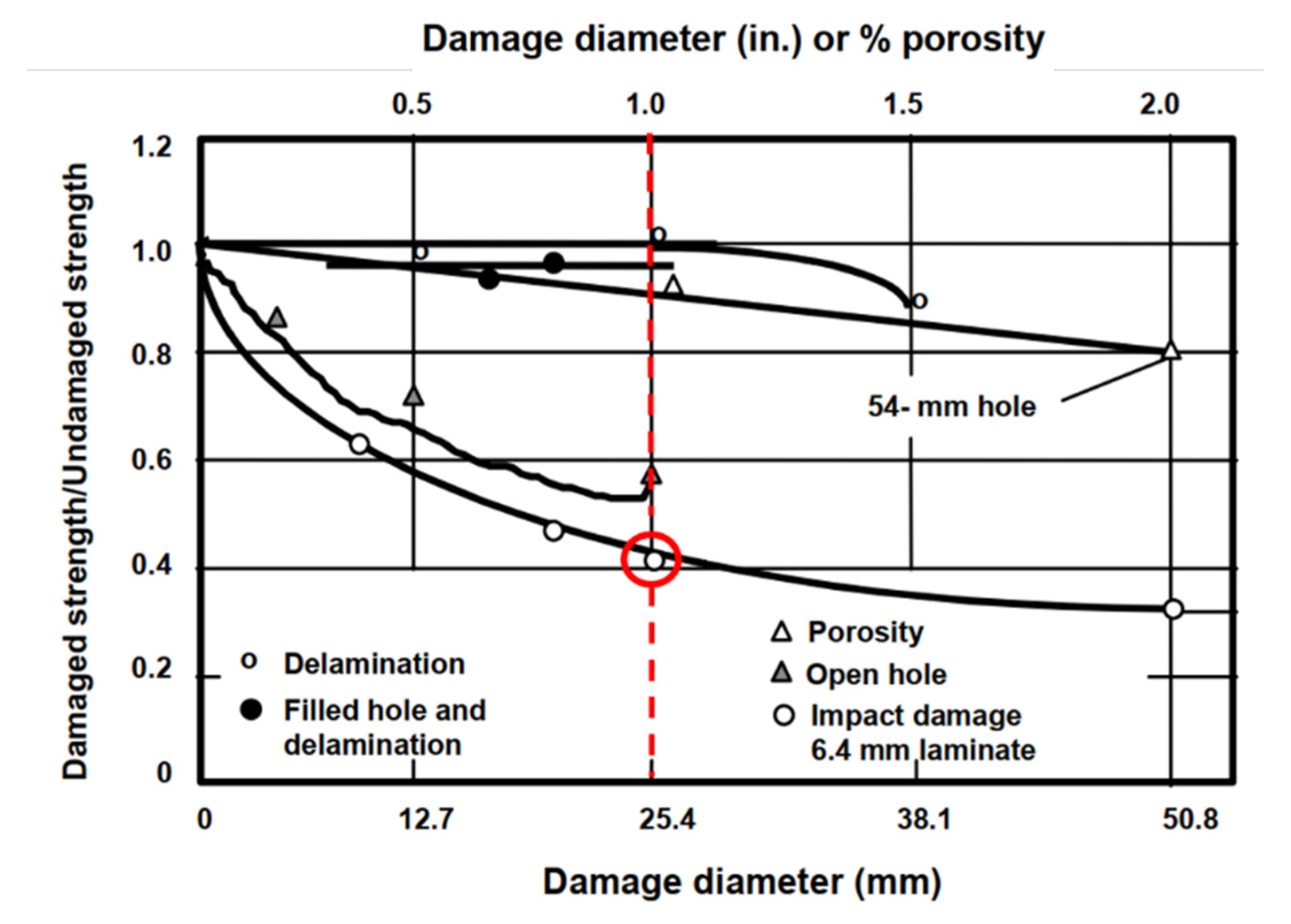
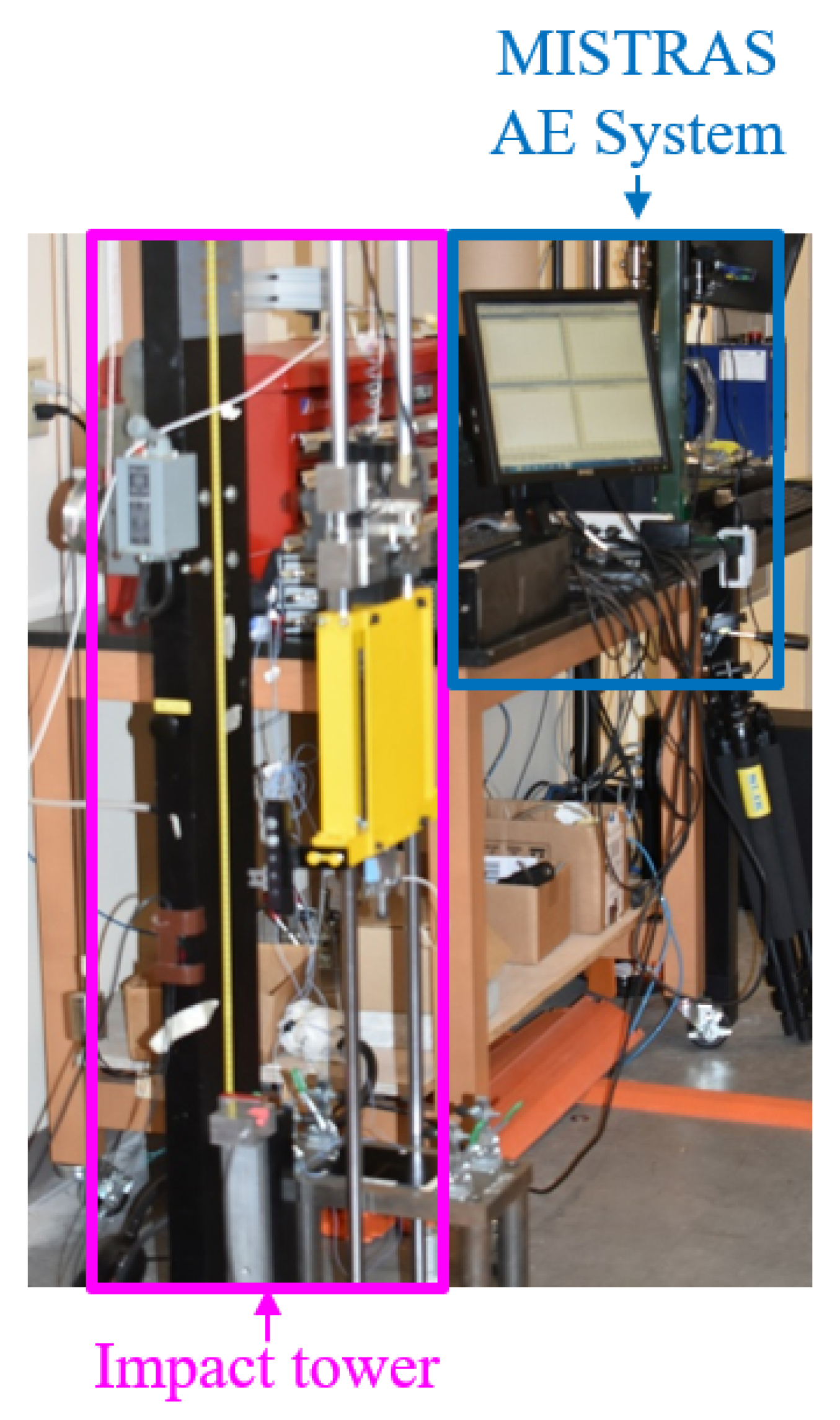

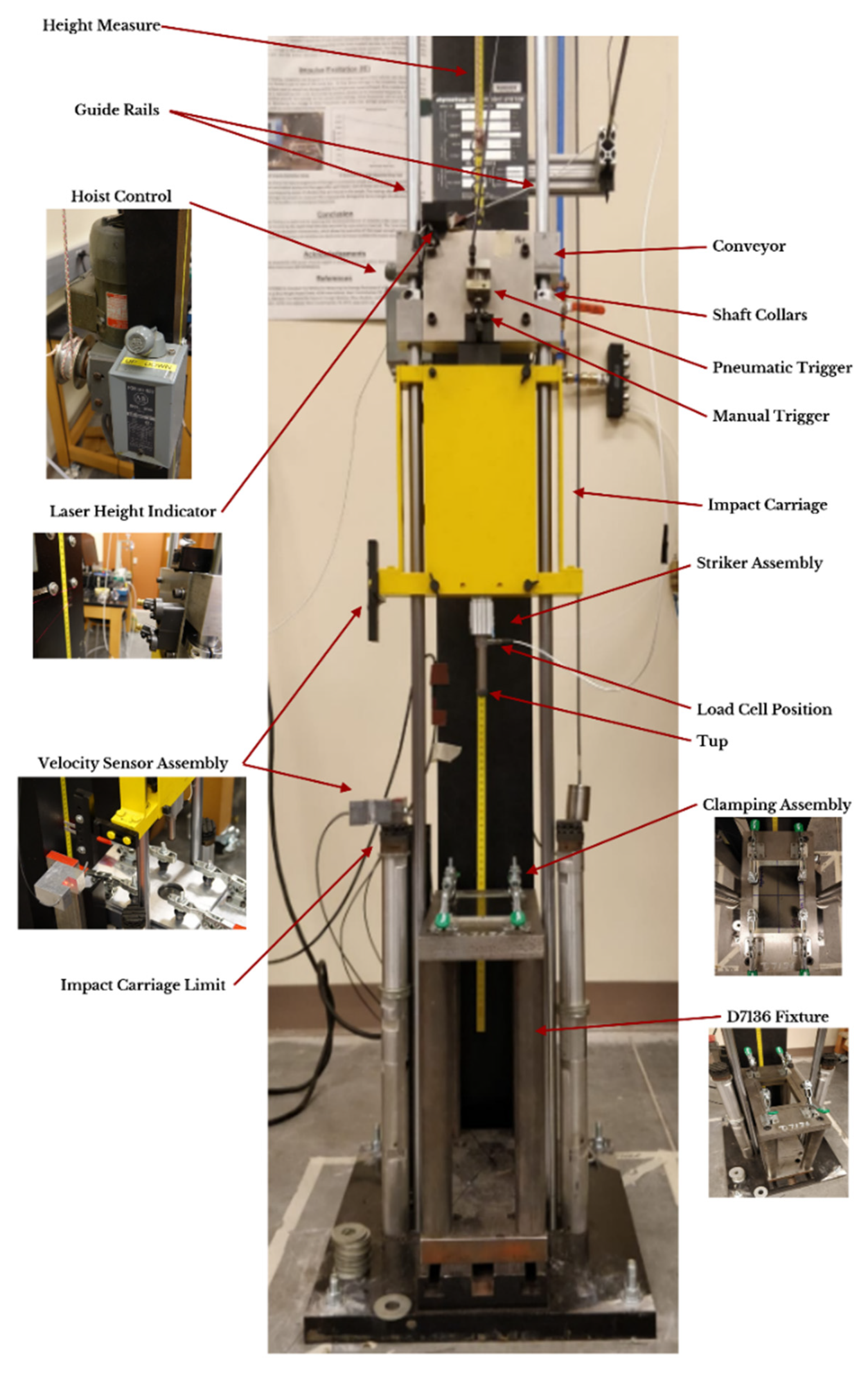
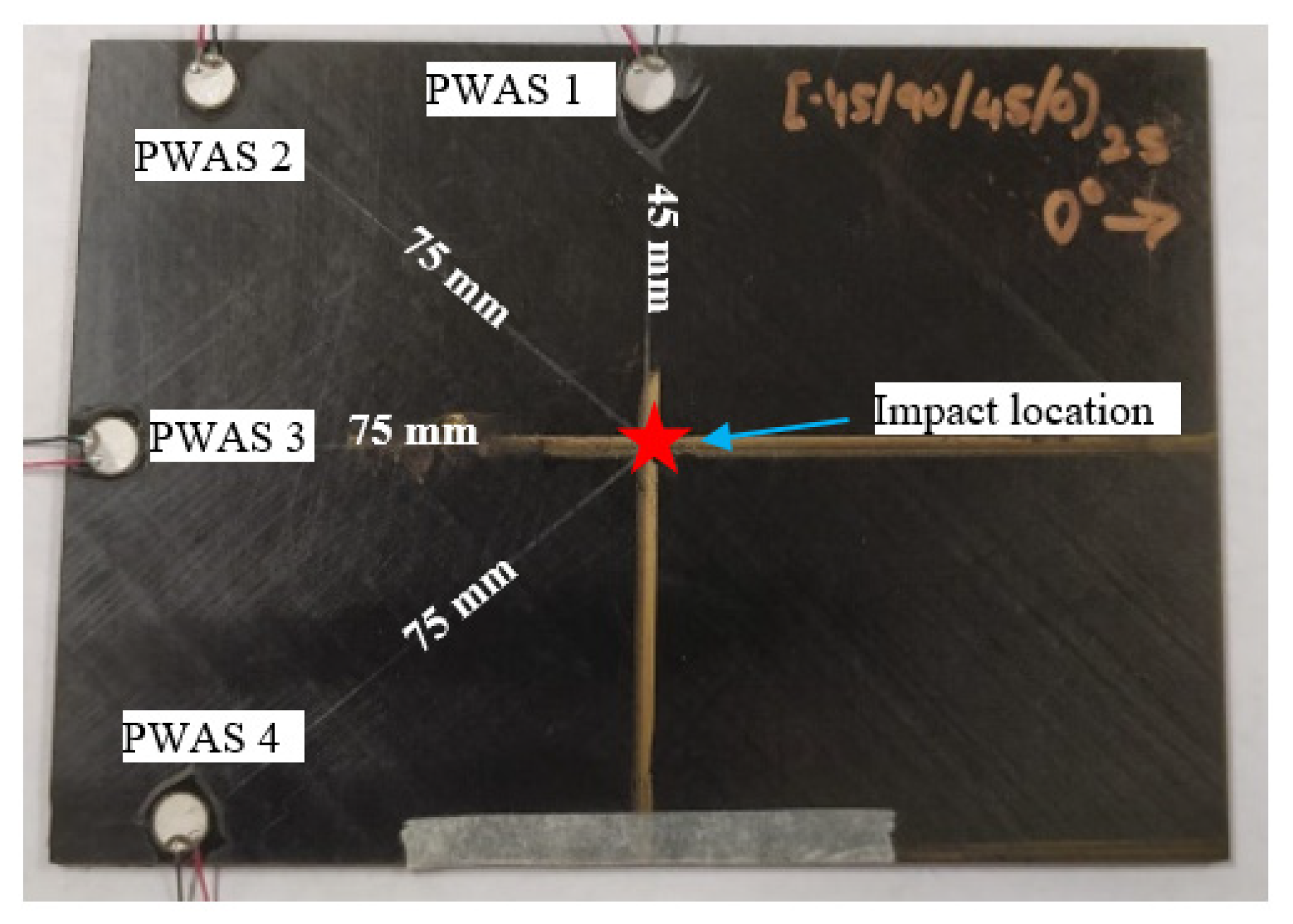

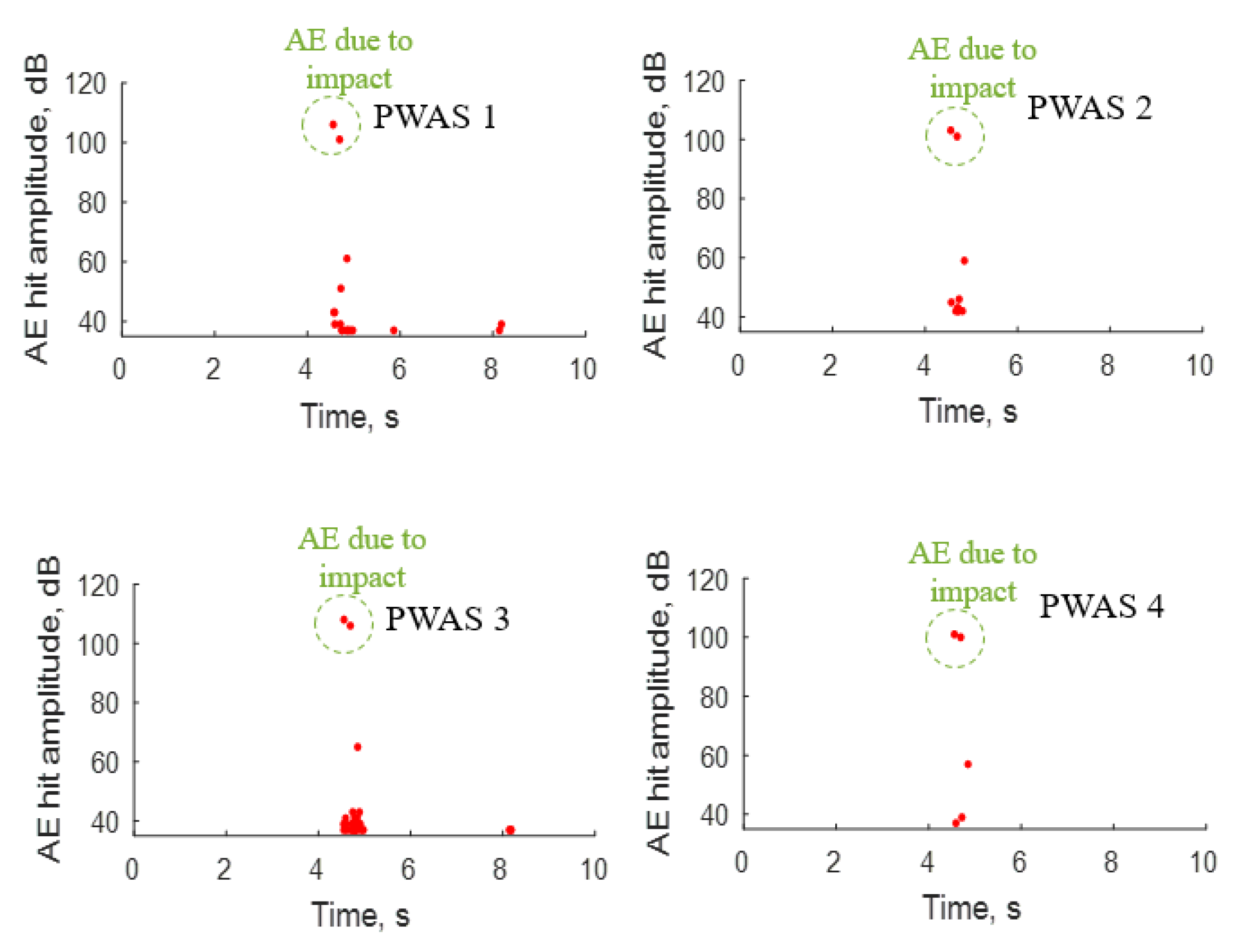


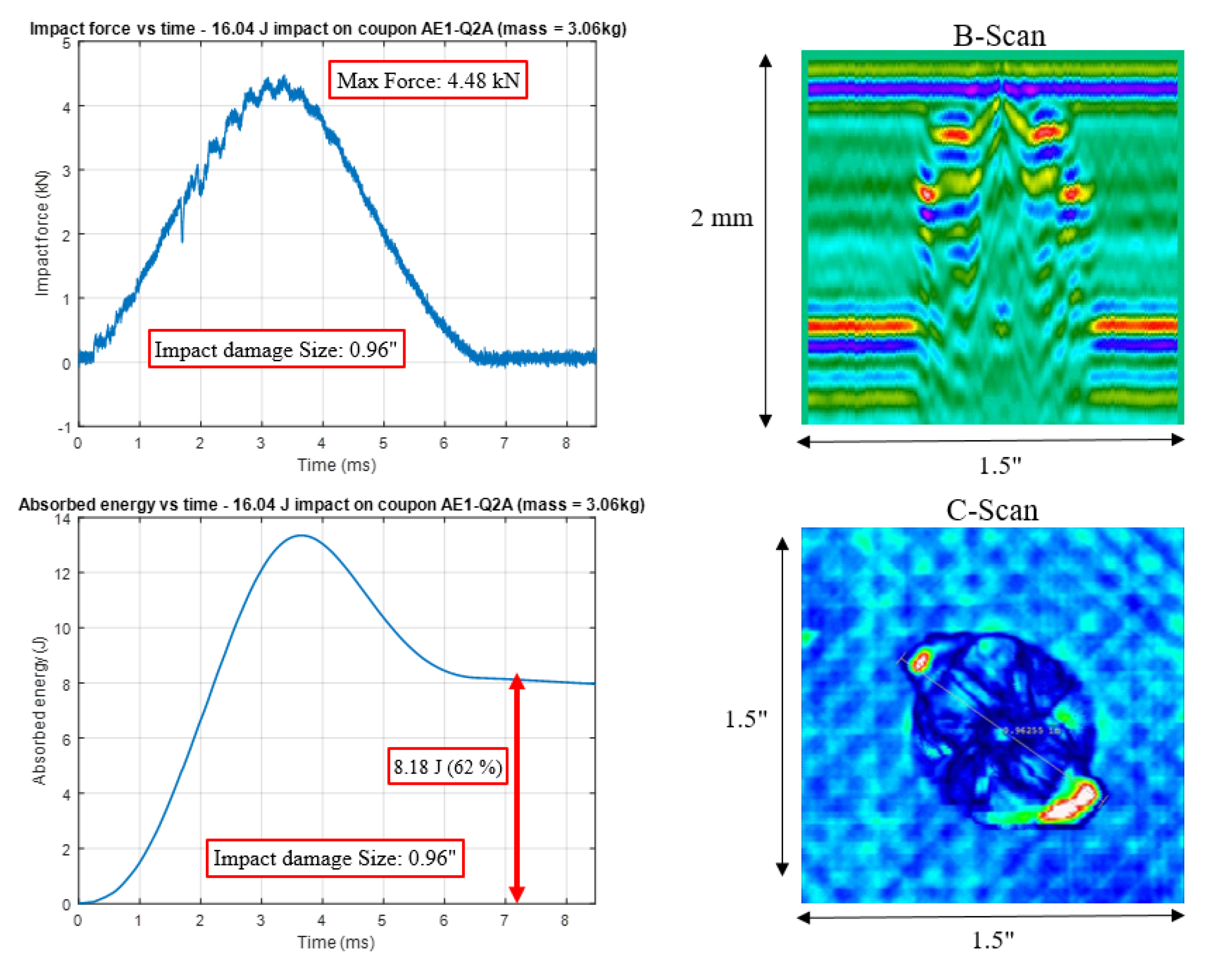
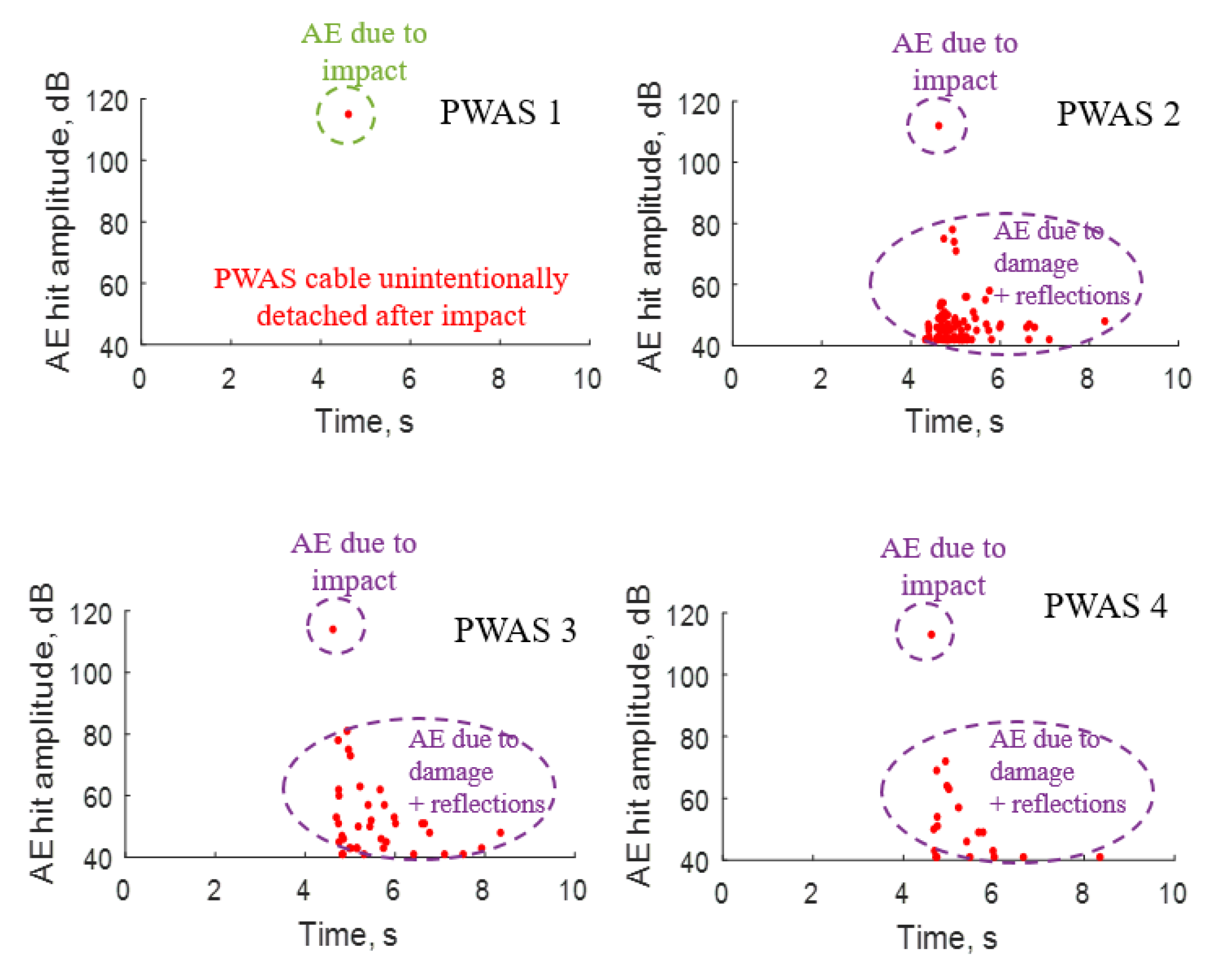


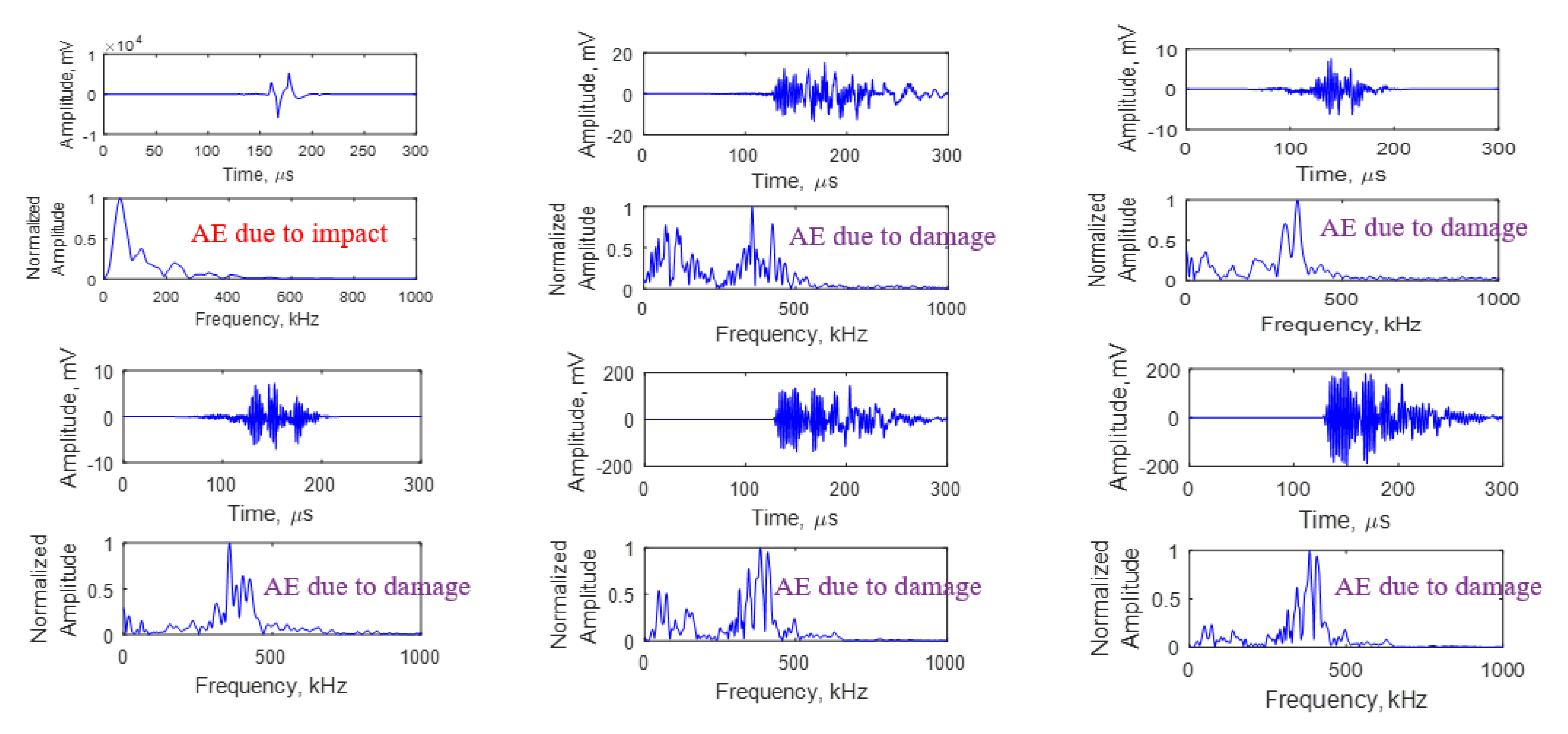
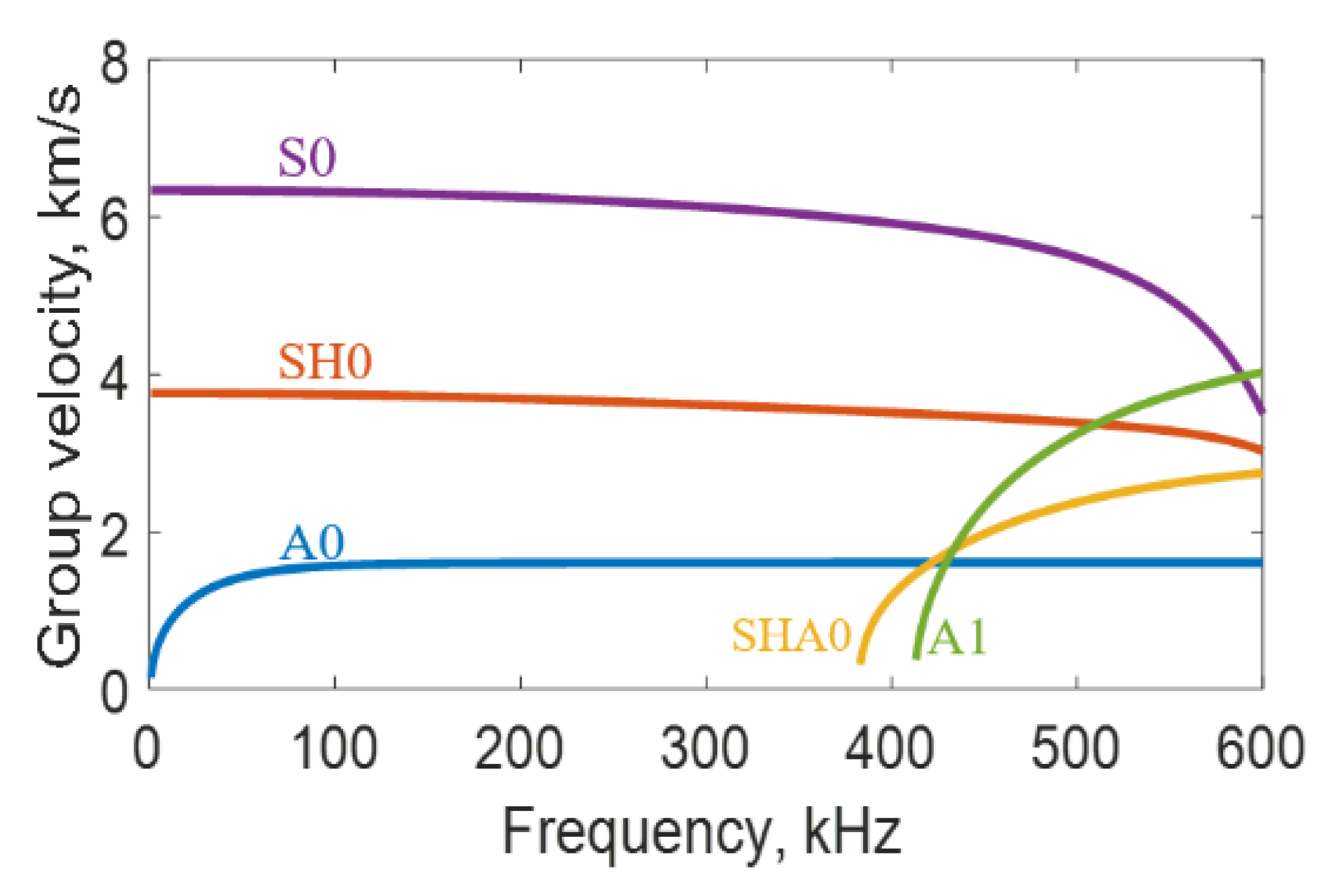

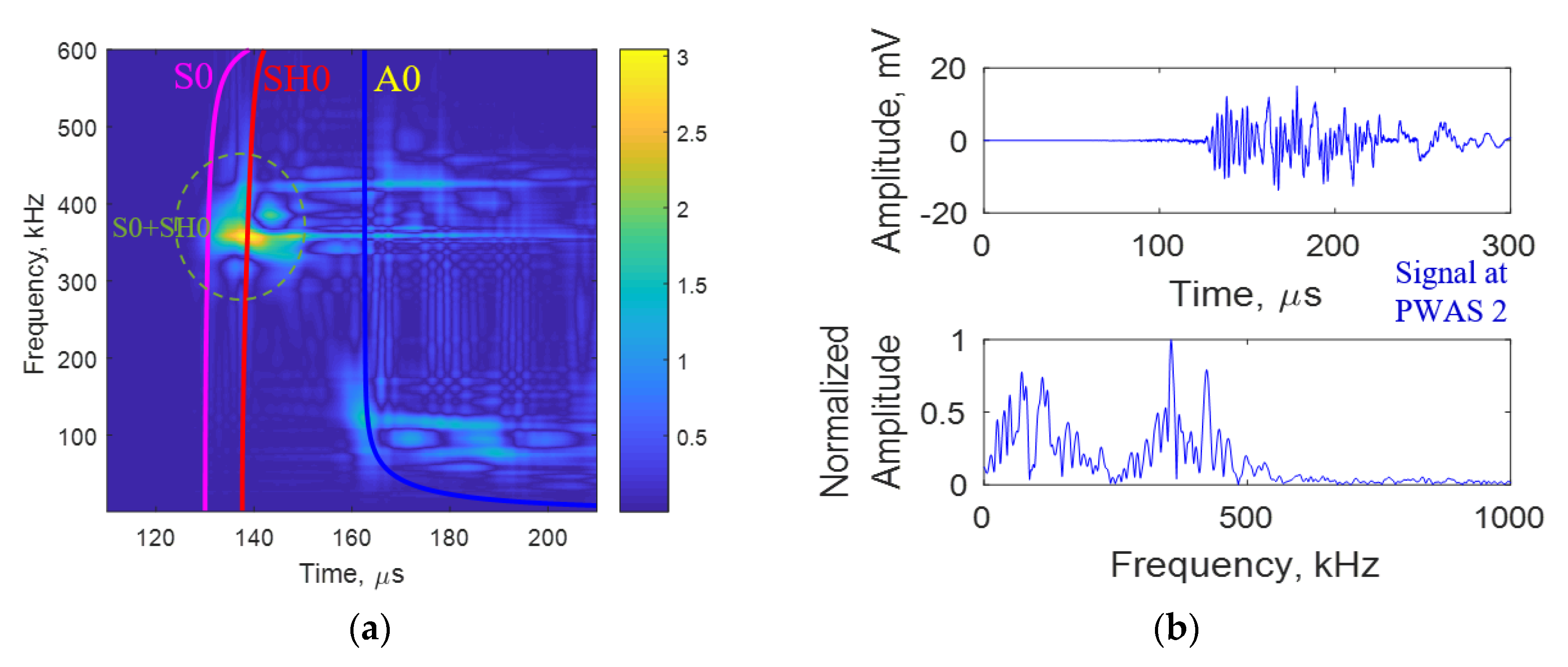
Publisher’s Note: MDPI stays neutral with regard to jurisdictional claims in published maps and institutional affiliations. |
© 2021 by the authors. Licensee MDPI, Basel, Switzerland. This article is an open access article distributed under the terms and conditions of the Creative Commons Attribution (CC BY) license (http://creativecommons.org/licenses/by/4.0/).
Share and Cite
James, R.; Joseph, R.P.; Giurgiutiu, V. Impact Damage Ascertainment in Composite Plates Using In-Situ Acoustic Emission Signal Signature Identification. J. Compos. Sci. 2021, 5, 79. https://doi.org/10.3390/jcs5030079
James R, Joseph RP, Giurgiutiu V. Impact Damage Ascertainment in Composite Plates Using In-Situ Acoustic Emission Signal Signature Identification. Journal of Composites Science. 2021; 5(3):79. https://doi.org/10.3390/jcs5030079
Chicago/Turabian StyleJames, Robin, Roshan Prakash Joseph, and Victor Giurgiutiu. 2021. "Impact Damage Ascertainment in Composite Plates Using In-Situ Acoustic Emission Signal Signature Identification" Journal of Composites Science 5, no. 3: 79. https://doi.org/10.3390/jcs5030079
APA StyleJames, R., Joseph, R. P., & Giurgiutiu, V. (2021). Impact Damage Ascertainment in Composite Plates Using In-Situ Acoustic Emission Signal Signature Identification. Journal of Composites Science, 5(3), 79. https://doi.org/10.3390/jcs5030079






